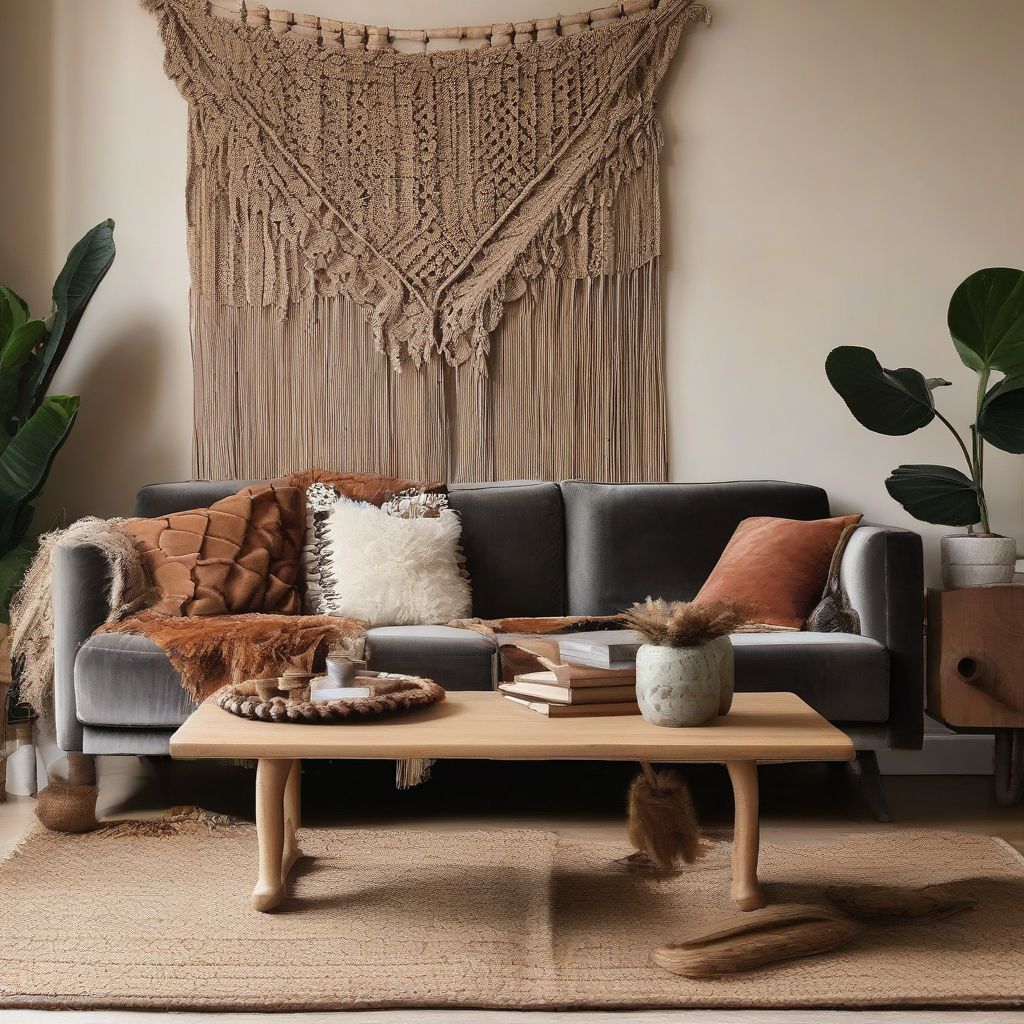Imagine stepping into a room where every surface feels flat and lifeless. The walls are painted a single, monotonous hue, the furniture lacks depth, and the overall ambiance feels dull and uninspiring. This is the power of texture – or rather, the lack thereof – in interior design.
Texture, simply put, refers to the way a surface feels or appears to feel. It adds depth, dimension, and visual interest to a space, transforming it from one-dimensional to dynamic and engaging. Whether you’re aiming for a cozy and inviting living room, a sleek and modern kitchen, or a serene and tranquil bedroom, understanding how to effectively incorporate texture is key to achieving your desired aesthetic.
Understanding Different Types of Textures in Interior Design
Before diving into the “how-to,” let’s explore the two main categories of texture in interior design:
1. Visual Texture: This refers to the perceived texture of a surface based on its visual appearance. Think of a brick wall – while it may feel rough to the touch, its visual texture is what creates the impression of roughness even from afar.
2. Tactile Texture: This is all about how a surface actually feels upon physical contact. A plush velvet sofa, a rough-hewn wooden table, or a smooth marble countertop are all examples of tactile texture.
The key is to strike a balance between visual and tactile textures. Too much of one without the other can create a space that feels either too busy or too sterile.
Ways to Incorporate Texture in Your Interior Design
Ready to bring your design to life? Here are some practical and creative ways to use textures effectively:
1. Play with Textiles
Textiles are a designer’s best friend when it comes to adding texture. From luxurious velvet cushions and throws to rustic linen drapes and woven rugs, the options are endless. Consider layering different fabrics to create visual interest.
Example:
- Living Room: Imagine a cozy reading nook with a plush velvet armchair paired with a chunky knit throw and a patterned cushion.
2. Experiment with Wall Treatments
Gone are the days of plain painted walls. Today, there’s a plethora of options to add texture and dimension to your walls:
- Exposed Brick: Adds a touch of industrial chic or rustic charm.
- Wood Paneling: Creates warmth and a sense of sophistication.
- Textured Wallpaper: Offers endless possibilities, from subtle patterns to bold geometric designs.
Tip: Consider using different wall treatments in different areas of your home to define spaces and create visual interest.
3. Embrace Natural Elements
Nature is a master of texture, and incorporating natural elements into your interior is a surefire way to add depth and visual appeal. Think:
- Wooden Furniture: A rustic wooden coffee table or a sleek, modern dining table can instantly elevate a space.
- Stone Accents: From a fireplace surround to a statement backsplash, stone adds a touch of timeless elegance.
- House Plants: Not just for a pop of green! Plants like ferns and succulents bring in organic textures.
Expert Tip: “Incorporating natural elements not only adds visual texture but also contributes to a sense of tranquility and connection to the outdoors,” says renowned interior designer, Sarah Moore.
4. Don’t Forget the Floor
Flooring plays a crucial role in setting the overall tone and texture of a room. Consider:
- Area Rugs: Layering rugs over hardwood floors adds warmth, texture, and defines spaces within a larger room.
- Natural Fiber Rugs: Jute, sisal, and seagrass rugs offer a touch of earthy texture and visual interest.
- Patterned Tiles: Whether in the kitchen or bathroom, patterned tiles add personality and visual intrigue underfoot.
5. Pay Attention to Details
Sometimes, it’s the smallest details that make the biggest impact. Consider incorporating textured elements in:
- Decorative Accessories: Woven baskets, ceramic vases with unique finishes, or sculptural pieces add visual interest.
- Lighting: Wicker pendant lights, textured lampshades, or metal sconces contribute to the overall textural tapestry.
- Hardware: Swapping out plain doorknobs and cabinet handles for ones with interesting textures can make a subtle yet impactful difference.
 Textured Interior Design
Textured Interior Design
[amazon bestseller=”interior design with texture”]
Bringing it All Together: Creating a Cohesive and Balanced Look
While it’s tempting to go all out with texture, the key is to create a sense of balance and cohesion.
- Start Small: If you’re new to incorporating textures, begin by introducing a few key pieces and gradually build from there.
- Vary the Scale: Don’t be afraid to mix and match textures of different scales. For instance, pair a large-scale woven rug with smaller, more intricate textures in cushions or throws.
- Consider the Mood: The textures you choose should contribute to the overall mood and ambiance you want to create in the space.
Conclusion: Transforming Your Space with the Power of Texture
Texture is the unsung hero of interior design. It has the power to transform a bland and forgettable space into a visually captivating and inviting haven. By understanding the different types of textures and incorporating them thoughtfully through textiles, wall treatments, natural elements, flooring, and details, you can create a home that is as visually appealing as it is comfortable and inviting. So, go ahead, embrace the world of textures and unlock a whole new level of design possibilities!
What are your favorite ways to incorporate texture in your home décor? Share your thoughts and design inspirations in the comments below! Don’t forget to share this article with your fellow design enthusiasts!
